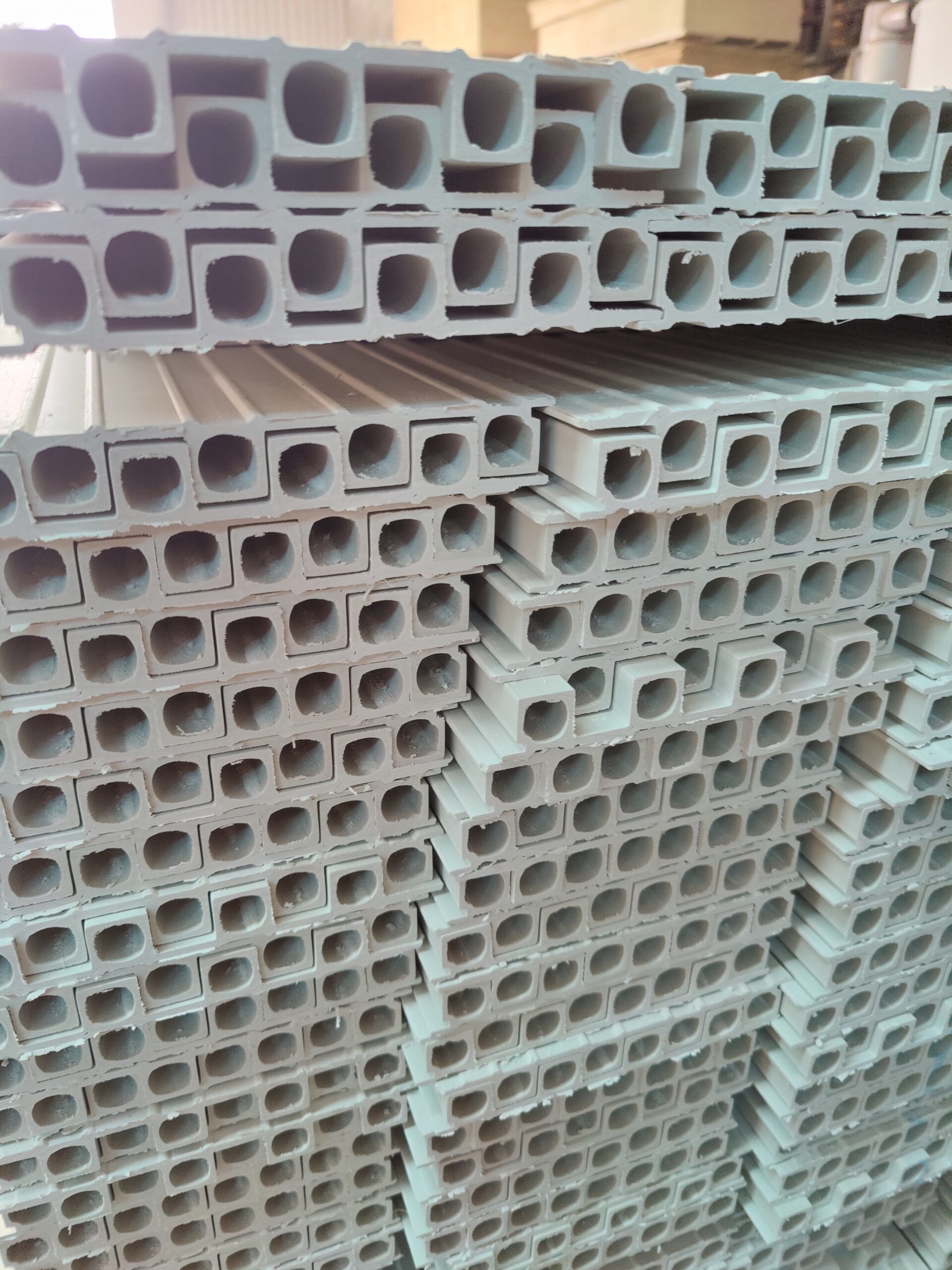WPC Panel
Wood-plastic composites (WPCs) are composite materials made of wood fiber/wood flour and thermoplastic(s) such as polythene (PE), polypropylene (PP), polyvinyl chloride (PVC), or polylactic acid (PLA). In addition to wood fiber and plastic, WPCs can also contain other ligno-cellulosic and/or inorganic filler materials. WPCs are a subset of a larger category of materials called natural fiber plastic composites (NFPCs), which may contain no cellulose-based fiber fillers such as pulp fibers, peanut hulls, coffee husk, bamboo, straw, digestate, etc. Chemical additives provide for integration of polymer and wood flour (powder) while facilitating optimal processing conditions.
WPCs do not corrode and are highly resistant to rot, decay, and marine borer attack, though they do absorb water into the wood fibers embedded within the material. Water absorption is more pronounced in WFCs with a hydrophilic matrix such as PLA and also leads to decreased mechanical stiffness and strength. The mechanical performance in a wet environment can be enhanced by an acetylation treatment. WPCs have good workability and can be shaped using conventional woodworking tools. WPCs are often considered a sustainable material because they can be made using recycled plastics and the waste products of the wood industry. Although these materials continue the lifespan of used and discarded materials, they have their own considerable half life; the polymers and adhesives added make WPC difficult to recycle again after use. They can however be recycled easily in a new WPC, much like concrete. One advantage over wood is the ability of the material to be molded to meet almost any desired shape. A WPC member can be bent and fixed to form strong arching curves. Another major selling point of these materials is their lack of need for paint. They are manufactured in a variety of colors, but are widely available in grays and earth tones. Despite up to 70 percent cellulose content (although 50/50 is more common), the mechanical behavior of WPCs is most similar to neat polymers. Neat polymers are polymerized without added solvents. This means that WPCs have a lower strength and stiffness than wood, and they experience time and temperature-dependent behavior. The wood particles are susceptible to fungal attack, though not as much so as solid wood, and the polymer component is vulnerable to UV degradation. It is possible that the strength and stiffness may be reduced by freeze-thaw cycling, though testing is still being conducted in this area. Some WPC formulations are sensitive to staining from a variety of agents.
- Walls and partitions in home constructions
- Suspended ceiling
- Structure panel
| Product Name | WPC Panel |
|---|---|
| Color | Solid color or Wooden color, etc. |
| Base plate color | White, gray, black |
| Size | 170*22mm, 170*24mm, 202*12mm, etc. |
| Length | Customized |
| Advantage | Fireproof, waterproof, anti-scratch |












Reviews
There are no reviews yet.